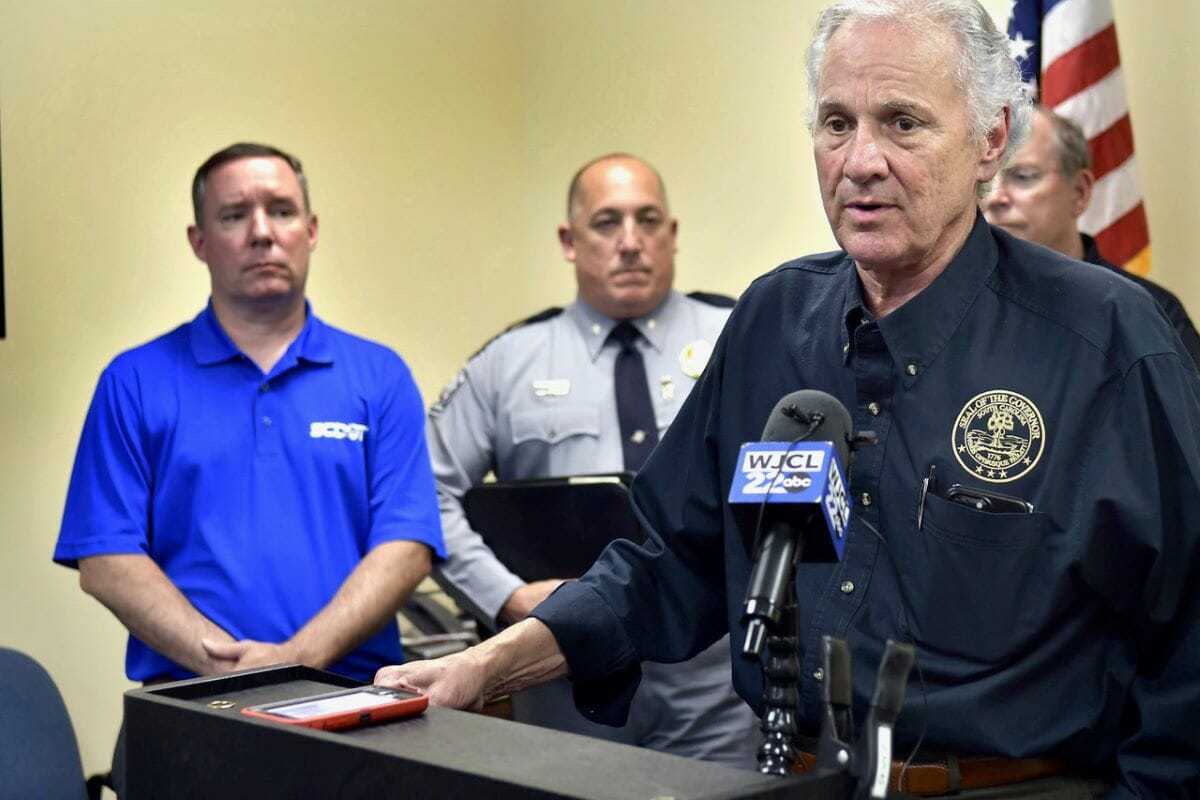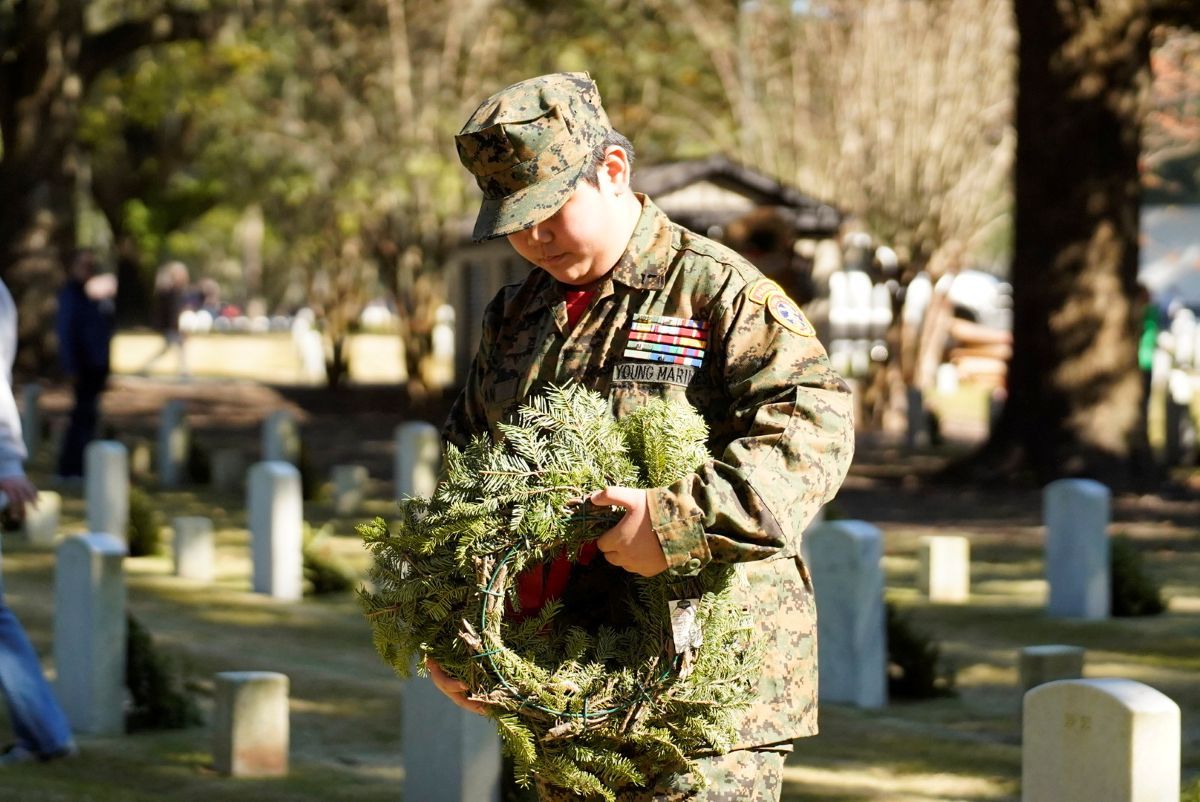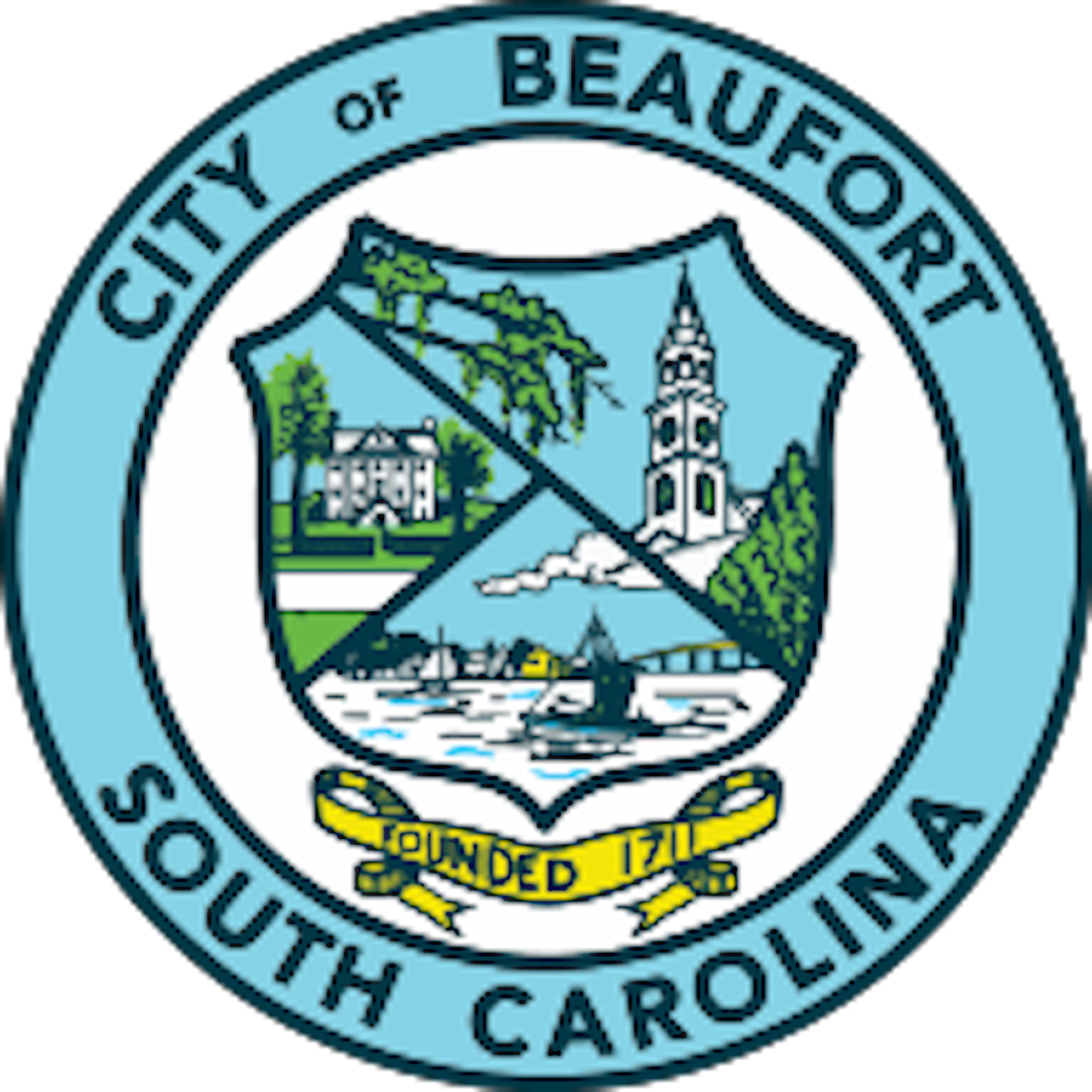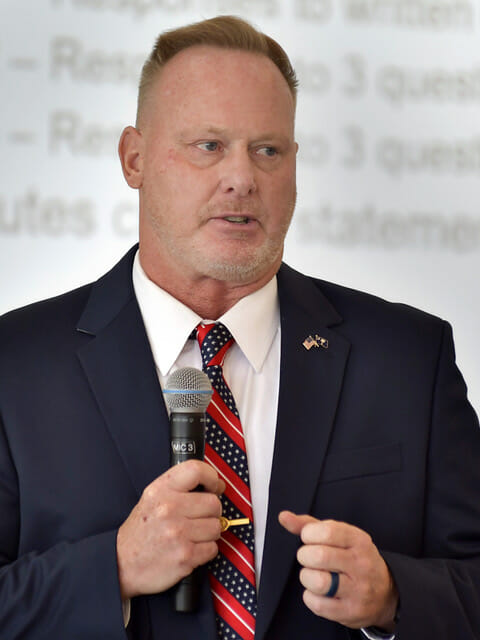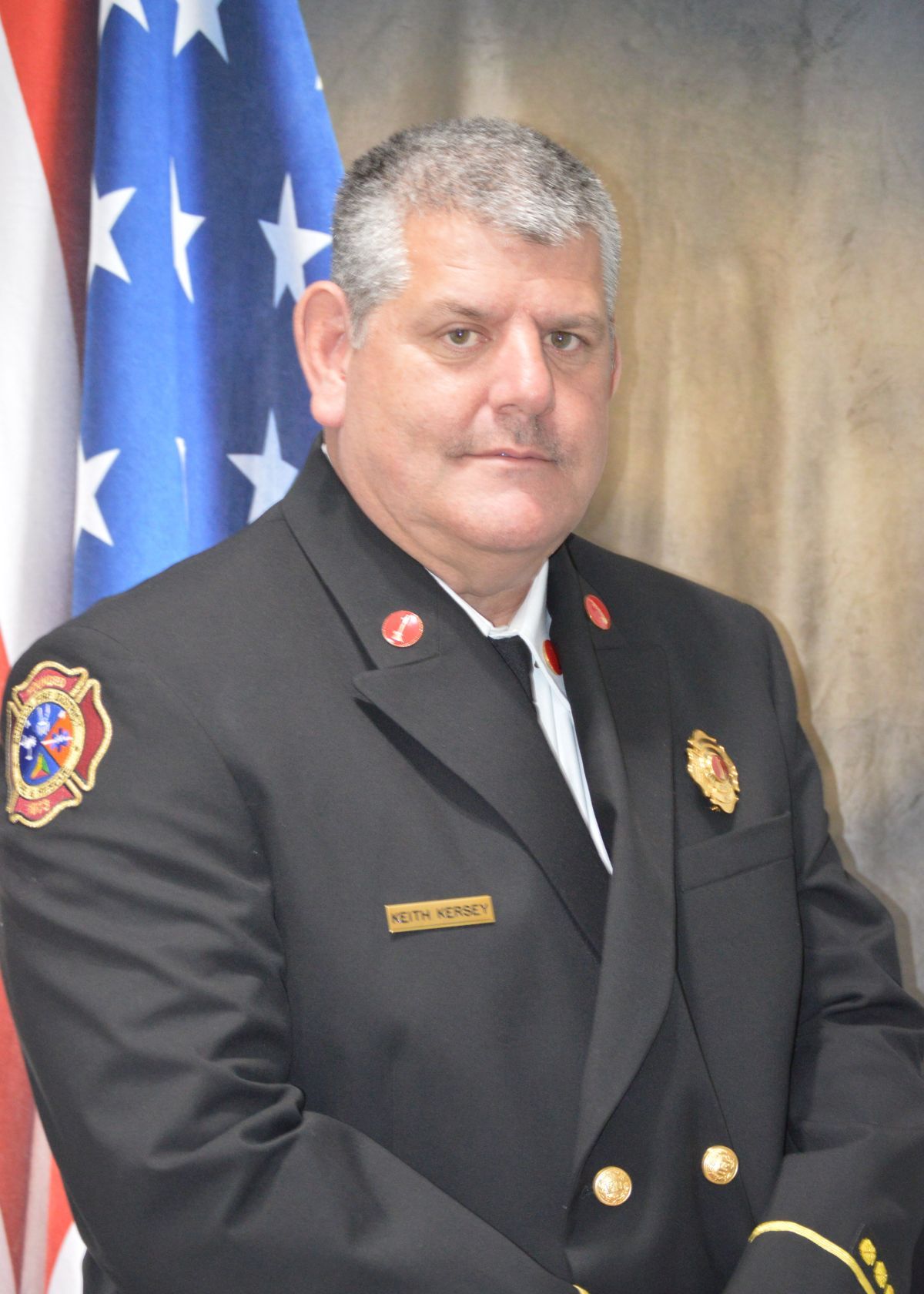By Mike McCombs
We’re ready.
At least that’s the conclusion of South Carolina Governor Henry McMaster after he participated in a Hurricane fly-around exercise on Friday, June 3, to assess the state’s preparedness as hurricane season gets into full swing.
Along with S.C. Highway Patrol Lt. Col. Travis Manley, S.C. Department of Transportation (SCDOT) Director of Traffic Engineering Rob Perry and S.C. Emergency Management Division Director Kim Stenson, McMaster met with emergency management officials in Horry, Charleston and Beaufort counties.
McMaster stressed preparation in a media conference following his meeting with officials from Beaufort County and its municipalities at the Beaufort County Emergency Operations Center inside the Beaufort County Sheriff’s Office at 2001 Duke Street.
“We’ve had a lot of hurricanes in South Carolina,” McMaster said. “We’ve also got a lot of new people, people who have not been in South Carolina or any other state when a hurricane has arrived. So we want to try to educate everyone on what it takes to be fully prepared because a lack of preparation can have enormous consequences for our people, their property and even their relatives.”
McMaster asked that residents to go to official sources for their information during a hurricane and not to trust social media, where he said information was often posted with good intentions only to be wrong. He also implored residents to implore their homes “before the hurricane has arrived and the wind is blowing and howling and the rain is hitting.”
Also, he said, like it or not, be prepared for an evacuation order.
“Sometimes people do not leave, sometimes things work out alright,” McMaster said, “and other times they work out with serious consequences.”
He added, “You can rebuild property, but you can’t rebuild people.”
“Know your zone, prepare your home, remember your route,” Stenson recited.
“Remember your evacuation route” is the part of that message officials gave the most weight.
Manley said there are 35 evacuation routes. Which one you use depends on the zone in which you live. He said it was important that residents, when evacuating, followed their prescribed routes and not their GPS. These routes have been constructed in an effort to manage traffic flow.
Residents can find their zone and their route at the SCEMD’s online hurricane guide at hurricane.sc. From there, residents can also download the S.C. Emergency Management app for their smartphones, allowing access to important hurricane information on the move.
“Prepare now, know your zone, know your route,” Manley said.
A full-scale evacuation requires the efforts of law enforcement, first responders and hundreds of SCDOT employees, as well, according to Perry. He said he has already driven all 35 evacuation routes to make sure the proper signage is present.
Up next? A full-scale evacuation simulation.
That exercise will happen the morning of Thursday, June 9 – a simulation of what a full-scale event will be.
“We will not be closing any roadways,” Manley said. “We will be staging assets with our partners … on the shoulder of the road. We ask the public to please pay attention (Thursday). We’ll start off early in the morning. Pay attention for our first responders on the side of the road for this exercise.”
Beaufort County Sheriff P.J. Tanner said in the instance an actual evacuation was needed, the key is knowing when to order it.
“… We know that we have had a huge influx (of people) and how that has impacted the coast of South Carolina,” Tanner said. “The challenge for us in our evacuation as we move citizens off the coast inward for safety, we’ve got a lot more people that we’re moving, which increases the volume of traffic. I know Director Stenson knows better than anyone else, this is a timing thing. We’re looking about the impact of a hurricane on our coast. It’s all about timing.”
McMaster reaffirmed his confidence in the state’s preparation by touting the experience of the majority of officials involved in the planning.
“Most of the people involved this year have been involved before,” he said. “There are some new folks, but it’s quite an experienced team. With the hurricanes we’ve had over the years, we’ve had just about every kind of storm from every direction.”
And the Governor reiterated why residents in Beaufort County should be just as prepared.
“The reason they call it the Lowcountry is because it’s low,” McMaster said “The water gets here quicker than everywhere else.”
Mike McCombs is the Editor of The Island News and can be reached at TheIslandNews@gmail.com.
BE READY FOR A HURRICANE
The Beaufort County government recently published these tips for the 2022 Hurricane Season:
– Visit South Carolina Emergency Management Division’s information page hurricane.sc for all the preparation information, as well as to download the S.C. Emergency Management app for smartphones.
– To receive direct announcements and alerts from Beaufort County through text or email, sign up at Beaufort County Government (https://public.govdelivery.com/accounts/SCBEAUFORT/subscriber/new) or Beaufort County Sheriff’s Office (https://bcso.net/).
– The Beaufort County Sheriff’s Office’s Emergency Management Division leads the County’s response to natural disasters and will be the primary source of local information when a storm threatens. After a storm has passed, operations then shift to Beaufort County Disaster Recovery (https://beaufortcountydisasterrecovery.net/).
– In addition to the Beaufort County Government and the Beaufort County Sheriff’s Office, for regular updates on preparations, County road and traffic changes, live-streams of state and local press conferences, evacuation orders, recovery efforts, County services, and post-storm damage reports, follow the Beaufort County Emergency Management Division (https://bcso.net/our-agency/emergency-management-division/).
– Likewise, town and city leaders will regularly update their residents with live-stream videos, messages from elected leaders, and detailed information specific to their localities. Follow the City of Beaufort (https://www.cityofbeaufort.org/), the Town of Port Royal (https://www.portroyal.org/) or the Town of Yemassee (https://www.townofyemassee.org/).
– Announcements from Gov. Henry McMaster’s office and state emergency management officials can be found on Twitter at @henrymcmaster and @SCEMD. And on Facebook at https://www.facebook.com/HenryMcMaster and https://www.facebook.com/SCEMD.
– Two important weather sites to bookmark ahead of time are the National Hurricane Center (https://www.nhc.noaa.gov/), which will provide regular updates on the hurricane’s potential timing, path, wind speeds and storm surge; and the National Weather Service in Chsrleston (https://www.weather.gov/chs/), which provides more location-specific forecasts for potential flooding and wind speeds.
– Things to consider if an evacuation order is issued: if staying with family or friends who live inland is an option for you, it is a good idea to make those arrangements ahead of time. If you intend to use a public shelter, the locations of which are outside Beaufort County and will be announced once an evacuation has been ordered, make plans to evacuate early.
– For more tips on what you can do now to ensure the safety of you and your loved ones in the event of a hurricane, visit https://www.ready.gov/hurricanes.


